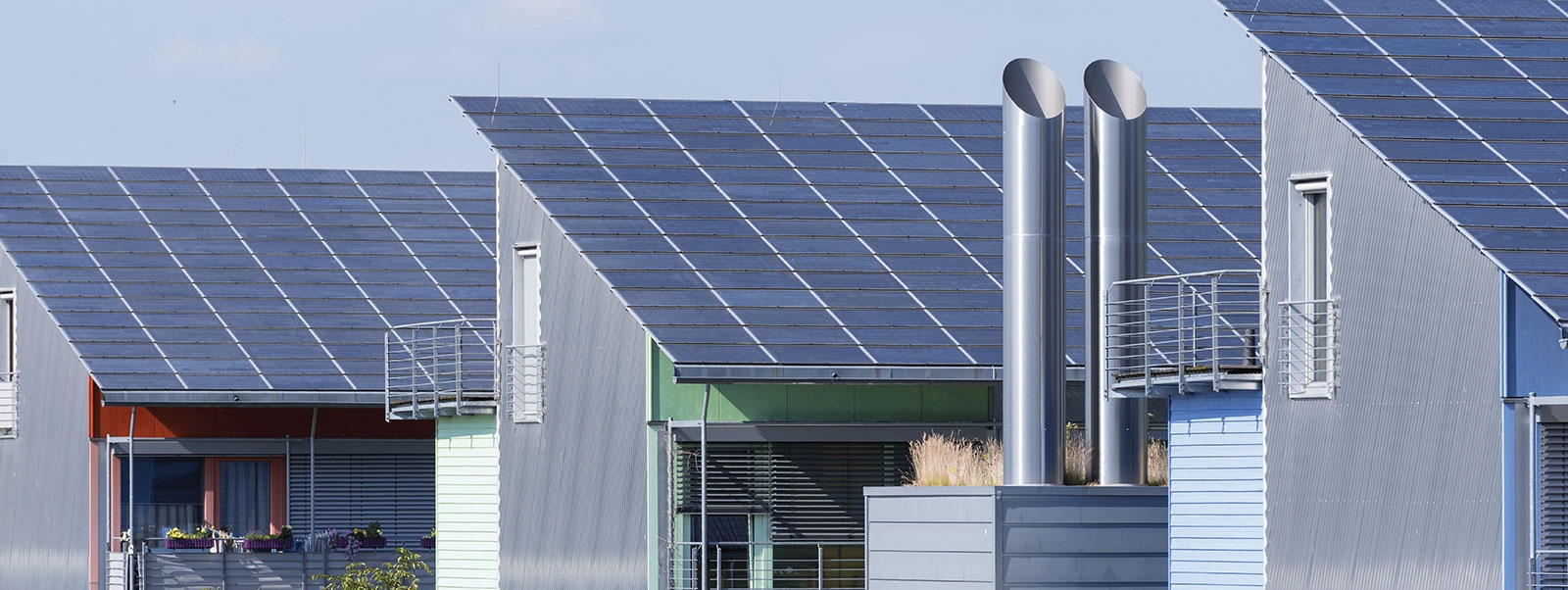The rise in community initiatives to produce and distribute energy at a local level over the past decade is about to overturn most utilities’ traditional business models. In geographies with competitive retail markets, customers are switching to more cost-effective and easily controlled distributed generation.
Peter Terium, chief executive of German utility RWE, summed up the importance of this trend at a recent earnings announcement, when he described his company’s operating model as “collapsing under us. ”
Utilities can no longer count on captive customers. As the technology develops to allow people to reduce dependency on traditional power grids, growing numbers of aggravated customers will abandon their energy companies.
However, what initially appears to be a problem for utilities might also offer a solution. Utilities that embrace the tenets of the community energy model to reconnect with customers have the opportunity to pioneer new offerings and partnerships that will not just enable them to survive, but to thrive.
FRUSTRATED CUSTOMERS
Customer frustration with utilities is growing in a number of developed markets globally. In the United Kingdom and Germany, customer dissatisfaction has risen to record levels for several reasons. First, higher energy prices have created a perception of profiteering by the major energy companies. Second, customers are upset by prolonged outages triggered by major storms and unpopular government policies that utilities must implement. Finally, many utilities have done little to communicate the initiatives they are undertaking to address the complaints of customers.
In Europe, the level of dissatisfaction has reached an extreme: Only half of customers in the UK are satisfied with their utility supplier, according to a report by the UK regulator Ofgem in March 2014. Just as worrisome, customer complaints have increased by more than 50 percent since the beginning of 2011. Customers are less content with utilities than they are with retail banks, mortgage lenders and insurance providers, according to 2013 data from the UK’s National Customer Satisfaction Index. In Germany, a Kundenmonitor Deutschland customer satisfaction study showed that natural gas providers and power supply companies ranked 19th and 21st, out of 22 industries.
Customer satisfaction in the United States is faring better, in large part because cheap natural gas has kept electricity prices low. Satisfaction rates are improving steadily year-on-year. But the utility industry is still ranked sixth out of 12 industries in the 2013 American Customer Satisfaction Index, and future price increases could test the fragile customer-supplier relationship.
Customer discontent is already affecting the bottom line of many utilities. In the UK last year, customers switched utilities at the highest rate in five years, according to Ofgem. USwitch, a UK-based price comparison service and switching company, found that 22 percent of customers would move to a new electricity provider for improved customer service (all other factorsbeing equal), while 13 percent would move just to get away from the Big Six incumbent utilities.
MAKING POWER
Increasing numbers of customers have started to make, rather than buy, their electrical power. Distributed generation (the production of energy at a local level, often via solar panels or onshore wind turbines) has become a practical option as solar and battery storage technologies become increasingly cost effective.
The German village of Feldheim, south of Berlin, illustrates how community generation can lead to self-sufficiency and marginalize a major energy company. In 2008, Feldheim established a joint venture with energy company Energiequelle to build a biogas factory that converts pig manure and corn into energy. The town also installed wind turbines and solar panels. Feldheim went on to gain independence from the grid, owned by energy giant E.ON, by building its own mini-grid. Locally produced heat and electricity are fed straight to consumers, who maintain control over their electricity prices, which are set at community meetings.
Some community energy initiatives go beyond generation to include wider demandside management of energy needs at a local level. The UK government’s Community Energy Strategy outlines innovative ways to reduce energy usage, manage energy demand and purchase energy in ways that benefit the local community.
DECENTRALIZED MARKETS
We recognize that the speed of the industry’s transformation varies by geography. But the trend is clear. Citigroup predicts the size of the European decentralized market could grow to around one-third of the total utility market within the next two decades, causing the market for traditional utilities to shrink by half. This change could lead to a significant shift from traditional energy companies to those that design, manufacture, install and maintain distributed technology infrastructure.
Consider: The Greater London Authority is already establishing its own energy supply company that will buy power from generators owned by London’s boroughs and public bodies. The mayor of London, Boris Johnson, has set a target to procure 25 percent of the electricity the city government uses from local sources by 2025. To achieve this goal, the city will sell power at cost to other public sector groups such as the Transport for London and the Met Police. Operating under a junior electricity license, the new company aims to work with existing utilities to provide a wide range of back-office services.
For the longer term, the authority’s electricity company plans to buy energy from private local generators. The mayor’s office estimates that its scheme could stimulate up to $14 billion of investment in local, lowcarbon generation by 2025.
On paper, the transition to locally produced power could happen faster in the United States. Analysis of data from the Energy Information Administration shows that 20 percent of the installed photovoltaic generation capacity is now owned by municipals and cooperatives, up from 18 percent the previous year. The presence of strong municipal and regional energy suppliers has been a key driver of renewables growth in Germany, with more than half of all renewable capacity owned by farmers and cooperatives. In the UK, the dominance of the Big Six power suppliers and generators is seen by many as a barrier to the growth of community-led renewable schemes. (See Exhibit 1.)
COLLABORATIVE UTILITIES
The temptation for utilities would be to respond defensively to the dramatic shift underway in customer behavior. Instead, utilities should embrace the opportunities that local community energy initiatives offer. By adopting the populist principles of community energy, and applying the commercial skills of a corporation, traditional utilities can strike new partnerships ranging from joint ventures to community renewable generation to energy efficiency programs.
Some leading utilities already understand the power of a collaborative model. Investorowned water utility Affinity Water in the UK is using its knowledge of the local community to help shape its offerings. Drawing on the community energy principles of transparency, collaboration and fairness, Affinity has been able to successfully involve customers in its business planning process. As a result, Affinity has one of the highest customer satisfaction scores and has been fasttracked through the latest regulatory review process.
More utilities should treat their customers as potential producers of energy, not just as consumers. If this happens, utilities stand to benefit from the community energy trend because of their technical knowledge, investment capacity and access to customers. In the US, for example, Minneapolis-based electric and natural gas provider Xcel Energy Inc. offers customers a community generation program called Solar*Connect. Customers can buy or lease interests in a solar garden system and get credit on their power bills for the electricity produced.
NEW PARTNERSHIPS
Partnerships that bring together the enthusiasm of communities with the skills, resources and risk-hedging ability of investor-owned energy companies are not just a sound defense, but a smart offense for utility companies. Vast shifts are under way in everything from customer expectations to new technologies and energy prices, to weather patterns that demand large-scale alterations to utilities’ strategies. Those companies that develop concerted, focused plans to work with communities to conquer such problems will improve not only their ability to respond to these challenges, but the possibility of avoiding them. The utilities left standing will be those that build longerlasting collaborative enterprises.
by: JAMES BASDEN, ANDREW WILLIAMS & TIM WRIGHT
-
 Read More
Read MoreInsights Women are still passed over for the most senior leadership roles with only one in four executives female. What's preventing progress on women in leadership?Making The Invisible Visible
-
 Read More
Read MoreInsights Social justice was a key campaign theme for President Joe Biden. There is every reason to believe this theme will be applied to financial regulation.Social Justice, Financial Regulation, and The Biden Administration
-
 Read More
Read MoreInsights Retail’s Revolution - How To Navigate It?
-
 Read More
Read MoreInsights Ferran Reverter Planet is Chief Executive Officer of the MediaMarktSaturn Retail Group, Europe’s leading consumer electronics retailer.Turning A Crisis Into A Catalyst For Change



